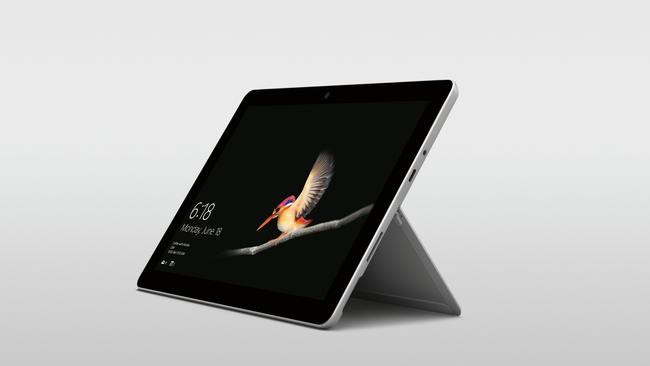Microsoft hits Go on iPad rival
The tech giant’s new Surface tablet is an attempt to steal away users from Apple.

Microsoft is taking on Apple’s iPad and Google’s Chromebook with its latest device, a cut-price Surface tablet.
The company’s new 10-inch Surface Go, which will ship in early August in Australia, will be the least expensive Surface out of the five in Microsoft’s arsenal, directly competing with the least expensive iPad which costs about the same.
In Australia pricing starts at $599, with the device featuring Windows 10 along with a built-in kickstand and high-resolution 3:2 touchscreen.
Microsoft’s chief product officer Panos Panay said in a blog post the Surface Go was designed to be lightweight, productive, and accessible to more people.
“In portrait mode, the screen was designed to render the page to the scale of most school textbooks, and in landscape mode, it can render pages side-by-side as if you were holding a paperback book in hand. At the approximate size of a composition notebook, writing on the screen feels natural and intuitive,” Mr Panay said in the post.
“For a family at home or on the move, an expert on the front line of a business interacting with customers, or a school that wants to provide its students with the most versatile tools for learning, this device offers a premium experience with incredible value.”
One big reason the Surface Go is cheaper than its siblings is its processing power — the seventh generation Intel Pentium Gold 4415Y processor inside the tablet means it is significantly less capable than the Surface Pro machines. It does have all-day battery life however, along with 4GB of RAM and 64GB of flash storage, and weights about half a kilogram.
Users who want more memory have the option of a $839 version, which boasts 8GB of RAM and a 128GB solid state drive.
The Surface portfolio has produced uneven results for Microsoft, though in the past few quarters the devices have sold well. In the three months ended March 31, Surface generated $US1.09 billion in sales, up 32 per cent from a year earlier.
With The Wall Street Journal.



To join the conversation, please log in. Don't have an account? Register
Join the conversation, you are commenting as Logout